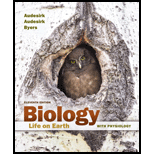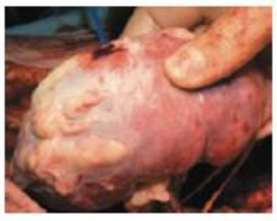
Concept explainers
Since the 1950s, when living kidney donation was first recognized as a viable alternative to cadaver organ donors, family and friends have come forward to offer a kidney to a victim of kidney failure. To reduce the chance that the recipient’s immune system will attack the donated kidney as if it were an invading microbe or
To remove a donor kidney (FIG. 36-9), surgeons generally use a technique called laparoscopic surgery, where they make half-inch incisions through which they insert surgical tools, including a tiny video camera to guide the operation. The kidney is extracted through an incision about 2½ inches long, put on ice, and rushed to its recipient. The operation takes 3 to 4 hours; donors remain in the hospital for about 3 days and return to work in about 3 weeks. In addition to the risks associated with major surgery, kidney donors will lack a backup kidney in the unlikely event that their remaining kidney fails. But a recent study of deaths among 80,000 kidney donors during a 15-year period found no greater mortality among this group (once they had recovered from their surgery) than among non-donors.

FIGURE 36-9 Surgeons transplant a kidney
Domino donations are almost always started spontaneously by someone inspired to make a difference. Since 2008, when DeGiulio’s donated kidney started a chain that saved four lives (FIG. 36-10), such domino donation chains have become longer and more frequent. For example, during a 4-month period, 17 hospitals in 11 states from California to New Jersey matched 30 people—who might otherwise have died—with kidneys from 30 donors they had never met. This heroic enterprise was started by Good Samaritan Rick Ruzzamenti, who got the idea from the desk clerk at his yoga studio, who had mentioned to him that she had donated a kidney to a friend. “People think it’s so odd that I’m donating a kidney,” he told the transplant coordinator at his hospital, but “I think it’s so odd that they think it’s so odd. . . . It causes a shift in the world.”

FIGURE 36-10 Domino donations Kidneys from compatible strangers saved the lives of these four recipients.
The more than 100,000 eligible individuals awaiting a kidney transplant ardently hope that domino donation chains continue to be forged and to lengthen.
CONSIDER THIS Would you donate a kidney to a friend or family member whose kidneys were failing? Would you consider donating a kidney to a stranger? Explain your reasoning.
Want to see the full answer?
Check out a sample textbook solution
Chapter 36 Solutions
Biology: Life on Earth with Physiology (11th Edition)
- 1. Match each vocabulary term to its best descriptor A. affinity B. efficacy C. inert D. mimic E. how drugs move through body F. how drugs bind Kd Bmax Agonist Antagonist Pharmacokinetics Pharmacodynamicsarrow_forward50 mg dose of a drug is given orally to a patient. The bioavailability of the drug is 0.2. What is the volume of distribution of the drug if the plasma concentration is 1 mg/L? Be sure to provide units.arrow_forwardDetermine Kd and Bmax from the following Scatchard plot. Make sure to include units.arrow_forward
- Choose a catecholamine neurotransmitter and describe/draw the components of the synapse important for its signaling including synthesis, packaging into vesicles, receptors, transporters/degradative enzymes. Describe 2 drugs that can act on this system.arrow_forwardThe following figure is from Caterina et al. The capsaicin receptor: a heat activated ion channel in the pain pathway. Nature, 1997. Black boxes indicate capsaicin, white circles indicate resinferatoxin. a) Which has a higher potency? b) Which is has a higher efficacy? c) What is the approximate Kd of capsaicin in uM? (you can round to the nearest power of 10)arrow_forwardWhat is the rate-limiting-step for serotonin synthesis?arrow_forward
 Human Biology (MindTap Course List)BiologyISBN:9781305112100Author:Cecie Starr, Beverly McMillanPublisher:Cengage Learning
Human Biology (MindTap Course List)BiologyISBN:9781305112100Author:Cecie Starr, Beverly McMillanPublisher:Cengage Learning Human Physiology: From Cells to Systems (MindTap ...BiologyISBN:9781285866932Author:Lauralee SherwoodPublisher:Cengage Learning
Human Physiology: From Cells to Systems (MindTap ...BiologyISBN:9781285866932Author:Lauralee SherwoodPublisher:Cengage Learning Comprehensive Medical Assisting: Administrative a...NursingISBN:9781305964792Author:Wilburta Q. Lindh, Carol D. Tamparo, Barbara M. Dahl, Julie Morris, Cindy CorreaPublisher:Cengage Learning
Comprehensive Medical Assisting: Administrative a...NursingISBN:9781305964792Author:Wilburta Q. Lindh, Carol D. Tamparo, Barbara M. Dahl, Julie Morris, Cindy CorreaPublisher:Cengage Learning Human Heredity: Principles and Issues (MindTap Co...BiologyISBN:9781305251052Author:Michael CummingsPublisher:Cengage Learning
Human Heredity: Principles and Issues (MindTap Co...BiologyISBN:9781305251052Author:Michael CummingsPublisher:Cengage Learning





